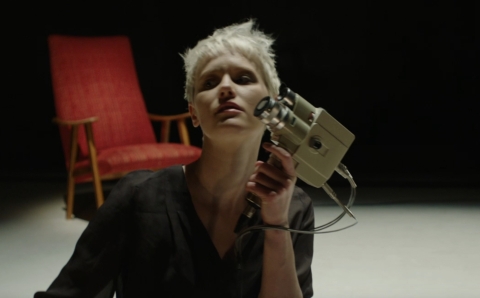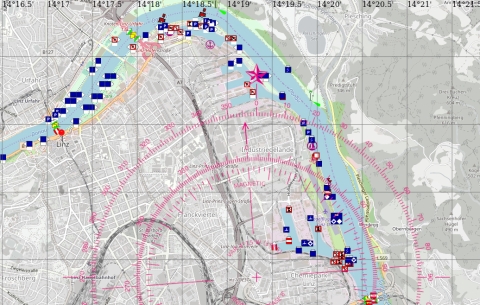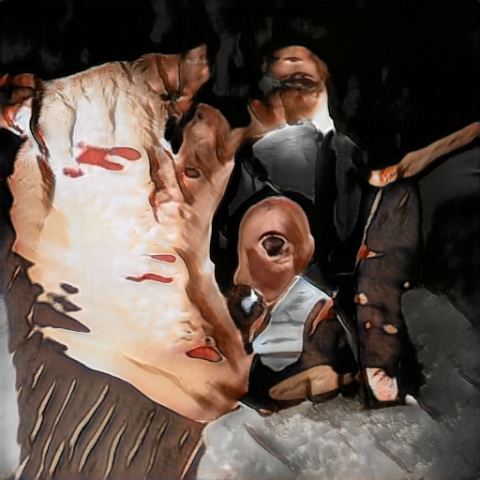Editorial
Recently, I was contacted by an author with questions regarding our journal’s stylistic preference. Does JAR prefer non-linear layouts? Do we favor media players to auto-play when a page is opened? Do we like the first person singular? My answer to these questions was the one I usually give: ‘No, we don’t expect particular formal choices. Please use whatever supports best the articulation of your practice as research!’ However, while these sentences remain true, we also need to consider the historical situation we are in, which also shapes expectations and beliefs about what constitutes a standard. Whether intended or not, if we look back over the last ten years of JAR publications, we could be forgiven to assume that there is a ‘house style’ at play, that is, a particular aesthetics of presentation that JAR has associated with artistic research.
In her recent article ‘Information Overload,’ Claire Bishop adds an interesting perspective to this question. In it, she argues that the (changing) structures inherent in the developing information technologies – and foremost the rise of the Internet – are so fundamental that whatever we associate with ‘research’ has to be expressed in relation to these, whether in accordance or in opposition. While Bishop’s focus lies on exhibition strategies in the last few decades, exhibiting what she terms the ‘genre’ of research-based art, there are some insights in her text, which equally apply to JAR. She reflects on how text and discourse have become part of the display, on the presentation of archives or large amounts of materials, as well as on their spatial distribution. In the same way as the white cube may not per se suggest a dominant ‘horizontal axis’ or ‘an overall structure [that] is additive rather than distilled,’ so JAR – another white cube of sorts – does not propose linear (‘vertical’) or non-linear (‘horizontal’) modes of presentation. And yet, as ‘research’ becomes activated, artistic forms seem to converge. Why might this be the case?
Although Bishop generalizes, her focus seems to be on the growth of artistic research in the UK, evidenced in her choice of the year 1992 as the beginning of ‘the first phase’ of research-based art. It was, after all, in that year that the UK Further and Higher Education Act has so fundamentally changed its academic landscape. However, is it really the case that ‘changes in art education have arguably been a more decisive influence than any of these forbearers [Bishop lists e.g. Lewis Hine, Hans Richter, Mary Kelly and Hans Haacke to name a few]’ and that ‘although research-based art is a global phenomenon, it is inseparable from the rise of doctoral programs for artists in the West, specifically in Europe, in the early ‘90s’’? Making connections in this way, Bishop suggests a causal link between institutional forms of art (education) and forms of contemporary art practice she finds troublesome, dovetailing her argument into some well-known positions on institutional critique.
This historical interpretation risks misrepresenting what has been happening in artistic research in academia, where ‘creating the look or atmosphere of research’ [emphasis in original] while avoiding ‘to draw conclusions’ is much less of an option when compared to the circuits of contemporary art from which her argument is fed. The problem that she identifies with sheer aggregations of data, must be understood primarily as part of our technological condition – the rise of search algorithms – rather than the outcome of research activities. This confusion between technology and research, however, carries over into the ‘two key rubrics for the new styles of literacy and spectatorship […] skimming and sampling’ [emphasis in the original] that she identifies. There is a sense that the ‘atmosphere of research’ is not sufficiently valued as implying conclusions, also on an aesthetic level. At JAR, we are specifically concerned with how all modes of literacy interrelate and where, as a consequence, conclusions lie. Skimming can, thus, have a proper function in research – just think of the dreaded literature reviews! – as a precondition to identify the site of one’s own contribution. However, I cannot see how skimming alone can be associated with research, as Bishop suggests in reference to Wolfgang Tilmans’ Truth Study Center. Without wanting to interpret the epistemic status of this particular example, there must be an awareness that appropriations of ‘styles’ of research need not pass as the thing itself.
At the same time – and this is where Bishop has a very valid point – we need to acknowledge that if research is to be exercised also on the side of the audience, a sense of ‘overwhelm’ and underdetermination must be achieved, to which ‘skimming’ is not an inappropriate response. However, skimming needs to lead somewhere. Affective, experiential or intellectual densities must emerge and the passages to and between them should have epistemic value. Only then can encounters become of the ‘sampling’ type – which Bishop prefers and research needs – as exemplified with reference to Forensic Architecture (which, by the way, is the only serious academic research project she analyses having, for instance, twice received funding from the prestigious European Research Council (ERC).) Relaying skimming to sampling, I would argue, is the key role of artistic form in such research presentations, and it should be evaluated accordingly.
Moreover, if we assume sampling to have yielded results, the experience of skimming changes. In such cases we start seeing patterns where we previously have not or we start questioning things anew, which we previously thought had been resolved, in certain ways. On a personal level, from the various experiences that can be had in the process of ‘reading’ and editing expositions for JAR, I mostly enjoy this last step: zooming out again from the different samplings, their taste still fresh, into the totality of the presentation; temporarily able to behold an otherwise invisible pattern in all that noise. From an editor’s perspective I would then work to improve the overall shape taking care not to damage the material substrate that invites for skimming. (Naturally, it can be debated what ‘improving’ means for specific cases, but as a task it almost always aims at increased efficiencies of these passages and sharpness of the resultant imaginary objects.)
With these descriptions I may have already given the reasons why presentations of research are artistically important, and why they should be looked at outside the much narrower constraints of academia’s transformations: research offers a mode in which articulation ceases to communicate – in terms of the transmission of information or knowledge – and reality can become jointly established in the most inclusive way. This is the very point of ‘evidence’ that is transpersonally established, for instance in Forensic Architecture’s investigations but also given as more personal testimony in Anna Boghiguian’s or Walid Raad’s work (both referenced by Bishop). For evidence to become established – and truth be told, to step onto this slippery slope – audiences must become active parts (‘users’ as Bishop says at one point) adding their own knowledges and experiences to what is at hand. Mark Leckey, who Bishop quotes, is, thus, right: ‘Research has to go through a body,’ but in research, to counter Bishop’s conclusion, it need not be the artist’s body; any body will do.
Michael Schwab
Editor-in-Chief





![[text]uring: writing through fashion for a new literacies dissertation](/sites/default/files/styles/large/public/2023-12/Sanders.png?itok=1wQUY8Zw)